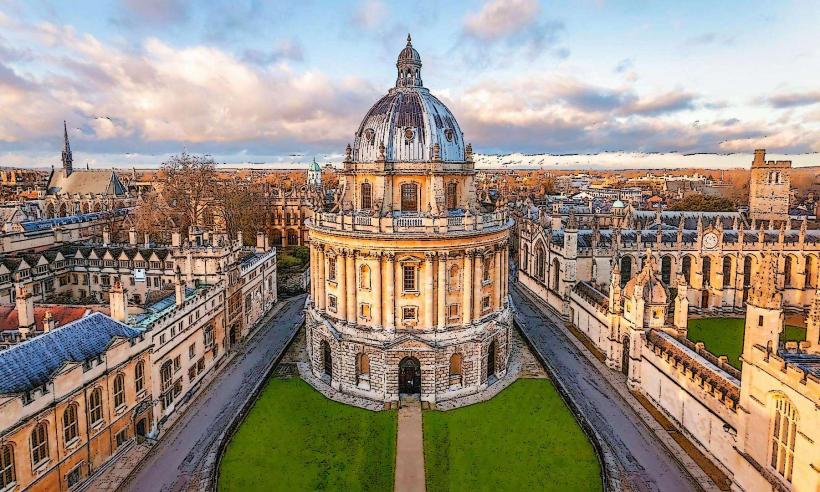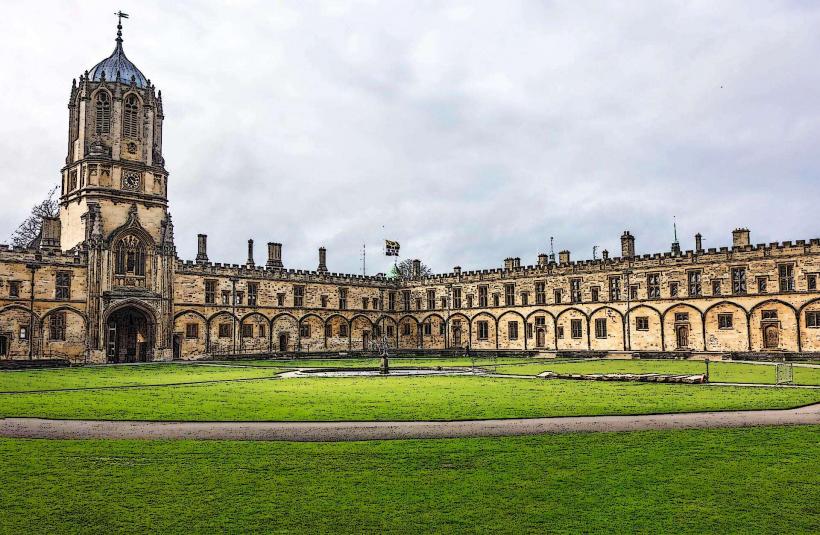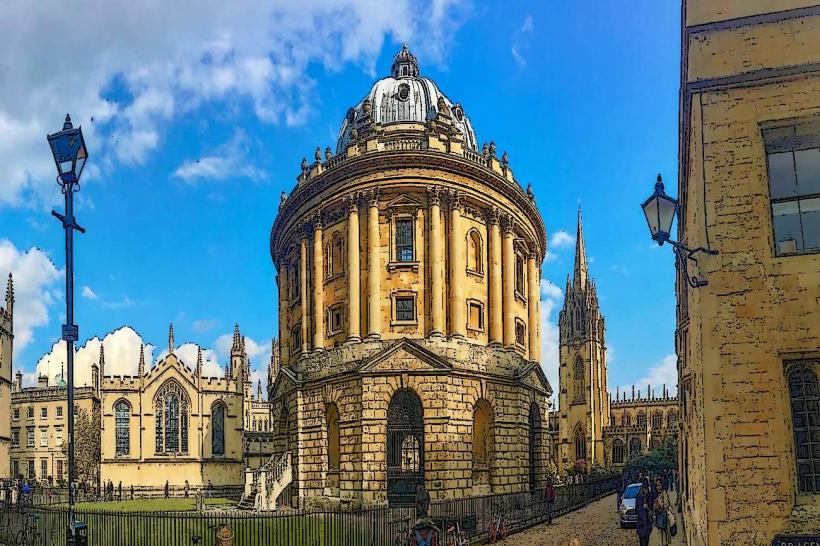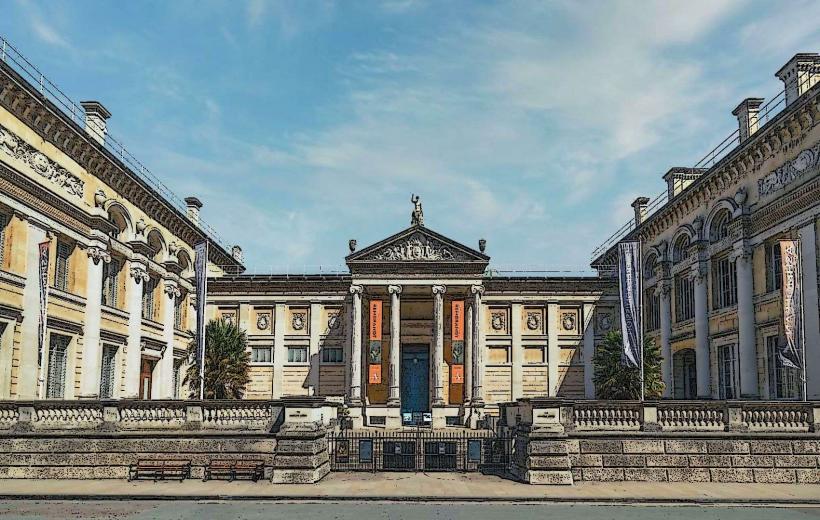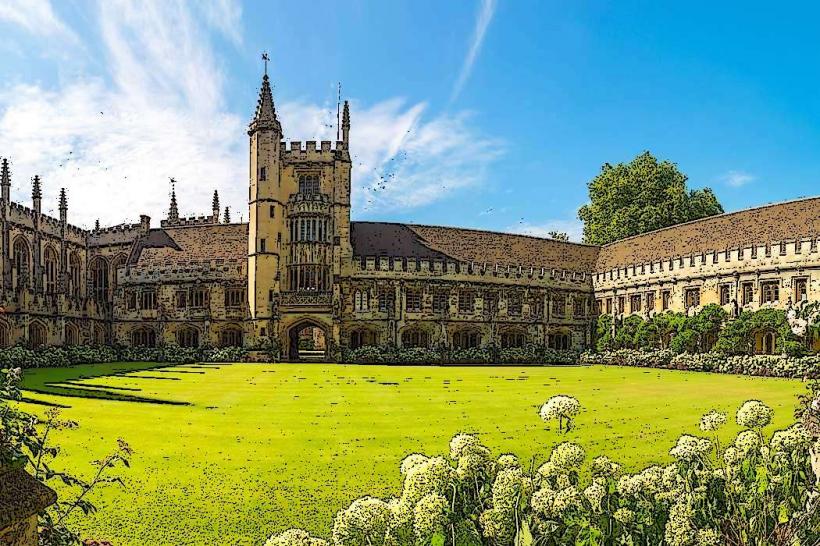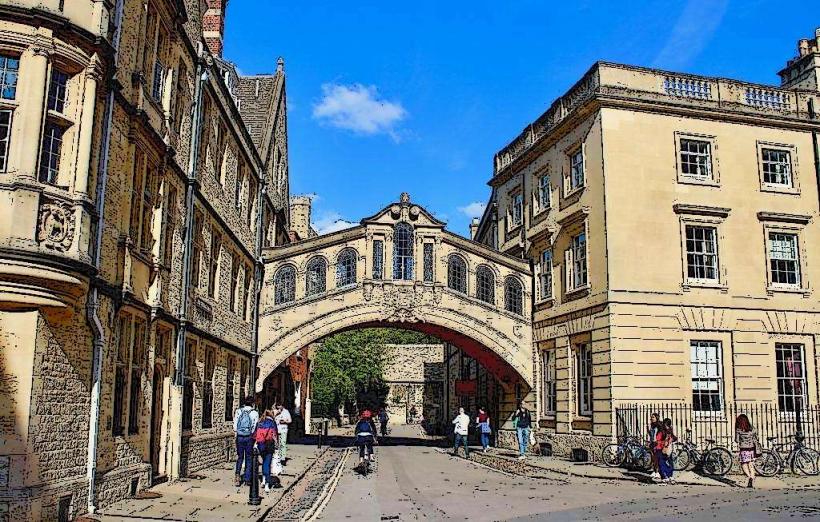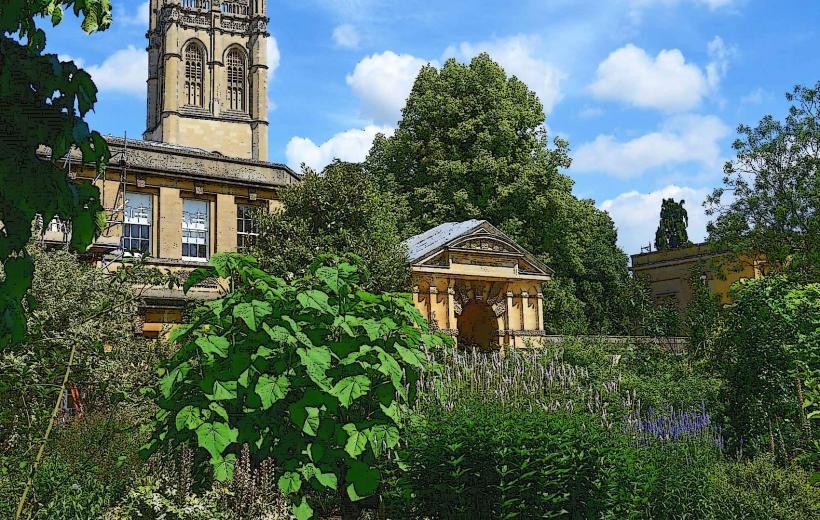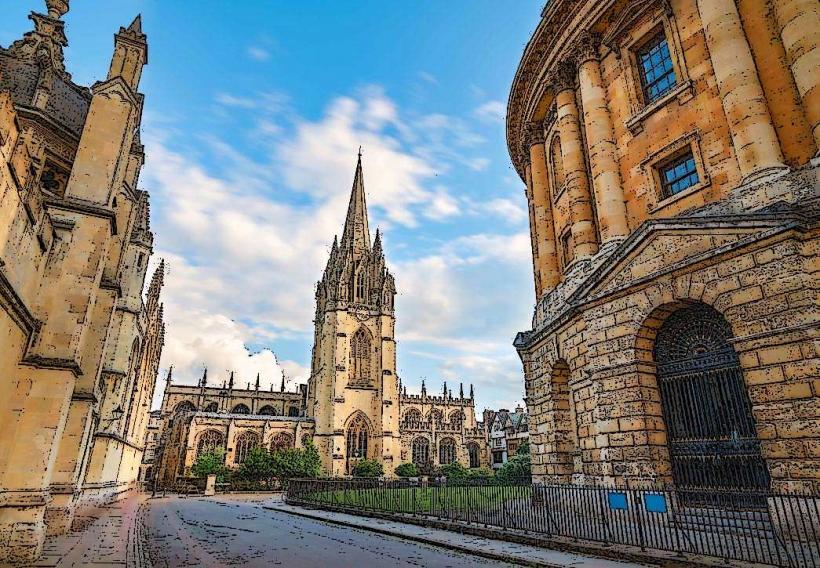Information
Landmark: Sheldonian TheatreCity: Oxford
Country: United Kingdom
Continent: Europe
The Sheldonian Theatre is one of Oxford’s most important and iconic buildings, known for its striking architecture and cultural significance. Located on Broad Street, it is part of the University of Oxford and serves as one of the university’s principal venues for ceremonial and academic events.
History and Origins
The Sheldonian Theatre was designed by the renowned architect Sir Christopher Wren and completed in 1669. It was commissioned by Gilbert Sheldon, who was the Archbishop of Canterbury at the time, and the building was named in his honor. The purpose of the theatre was to provide a venue for university ceremonies, including the awarding of degrees and public lectures.
At the time of its construction, the Sheldonian Theatre was part of a broader movement to enhance the intellectual and cultural life of Oxford, providing a dedicated space for public events and gatherings. The building is an early example of Wren's work and features many of the stylistic elements that would later define his architectural legacy.
Architecture
The Sheldonian Theatre is an outstanding example of Baroque architecture, showcasing Wren’s skill and vision. The building is a harmonious blend of classical and Renaissance styles, with a unique circular design that makes it one of the most recognizable buildings in Oxford.
Exterior Design: The exterior of the Sheldonian Theatre features a grand, domed roof with a distinctive lantern at its apex. The roof is supported by a series of pilasters and columns, which give the structure a sense of grandeur and symmetry. The building is constructed from local stone, giving it a warm, golden hue that blends with Oxford’s other historic buildings.
The Facade: The theatre’s entrance is framed by a large semicircular arch, flanked by two smaller arches, which provide access to the theatre’s interior. Above the entrance is a balcony, which offers a view of the street below. The facade is adorned with inscriptions, including a Latin dedication to Archbishop Sheldon, acknowledging his role in the theatre’s creation.
The Interior: The interior of the Sheldonian Theatre is equally impressive, featuring an elliptical space with seating for about 1,000 people. The theatre’s wooden galleries and balustrades are ornately designed, while the main floor is surrounded by a balcony with columns and arches. The ceiling of the theatre is painted with a magnificent fresco by the artist Robert Streeter, which was completed in 1672. The fresco depicts The Glory of the Arts and Sciences, symbolizing the university’s intellectual and cultural pursuits.
The theatre’s shape was designed to create a sense of intimacy and engagement, with the curved seating arrangement providing excellent acoustics for both musical performances and speeches.
Function and Significance
Since its completion, the Sheldonian Theatre has served a variety of important functions at the University of Oxford. These include:
1. Academic Ceremonies:
The Sheldonian Theatre is most commonly used for official university ceremonies, including the Encaenia (the university’s annual degree ceremony), where honorary degrees are conferred upon notable individuals. It also hosts events such as matriculations, convocations, and academic lectures. The theatre is the site for the university’s graduation ceremonies, where students receive their degrees.
2. Public Lectures and Concerts:
In addition to academic events, the Sheldonian Theatre is a popular venue for public lectures, music concerts, and cultural performances. It has hosted prominent speakers, including famous philosophers, writers, and political figures, making it an important site for intellectual exchange.
3. Examinations:
During the academic year, the Sheldonian Theatre is also used for university examinations, where candidates present their work or participate in oral exams.
4. Cultural and Artistic Events:
The theatre has hosted various musical performances and art exhibitions, showcasing the talents of Oxford’s students and providing a platform for cultural expression. As one of Oxford's most elegant venues, it is often used for classical music performances, including orchestral and choral concerts.
Notable Events
The Sheldonian Theatre has witnessed numerous historical and cultural events over the centuries. Some of the notable events that have taken place in the theatre include:
- The conferment of honorary degrees to world leaders, nobel laureates, and notable figures from various fields, including literature, science, and the arts.
- The public lecture series by prominent figures such as Stephen Hawking, Richard Dawkins, and Toni Morrison, who have delivered lectures in the theatre as part of the university’s intellectual tradition.
- The Annual Encaenia Ceremony, where the university honors distinguished individuals with honorary degrees.
Visitor Experience
While the Sheldonian Theatre is primarily used for university events, it is also open to the public. Visitors to Oxford often tour the building to appreciate its architectural beauty and historical significance. The theatre provides a stunning setting for special events, including weddings and private functions, making it a sought-after venue for various cultural occasions.
1. Guided Tours:
The Sheldonian Theatre offers guided tours, allowing visitors to learn more about the history of the building, its architectural features, and its role within the university. These tours are a great way to explore the rich heritage of the university and gain insight into the events that have taken place within the theatre.
2. Panoramic Views:
Visitors can also ascend to the roof of the Sheldonian Theatre, where they can enjoy panoramic views of Oxford. The viewing platform offers a unique perspective of the city, including views of Radcliffe Square, the Bodleian Library, and the University Church of St. Mary the Virgin.
3. Concerts and Performances:
For those interested in the arts, attending a concert or lecture at the Sheldonian Theatre is a memorable experience. The acoustics and intimate setting of the theatre create a distinctive atmosphere for music performances, and the venue hosts regular cultural events throughout the year.
Conclusion
The Sheldonian Theatre is an architectural masterpiece and a key part of Oxford’s cultural and academic life. Designed by Christopher Wren and built in the 17th century, it has served as a venue for important university ceremonies, intellectual gatherings, and cultural performances. Its unique blend of Baroque architecture, historical significance, and beautiful interior make it a must-see landmark in Oxford, offering both visitors and students a glimpse into the rich heritage of one of the world’s most prestigious universities.

